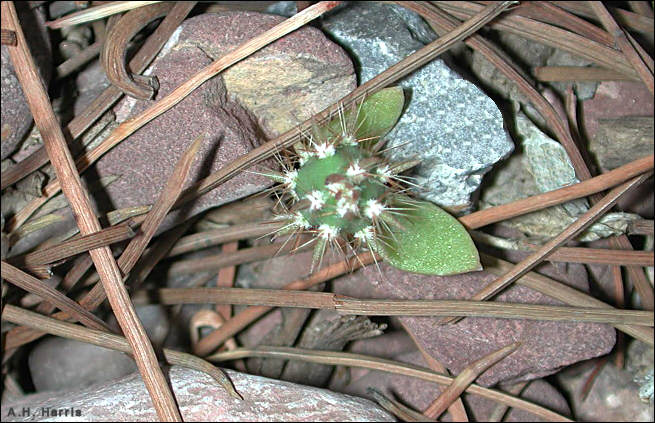
Cacti are some of the most bizarre plants imaginable. Whether the flat pads of prickly pear, the cylindrical stems of cholla, or the tall, branched columns of saguaros and the like, "different" is the word. Nevertheless, these are plants akin to other plants, just marching to the beat of a different drummer.
Of course, some similarities are obvious, such as having chloroplasts
with chlorophyll to process carbon dioxide and water into food molecules by using the
energy of light. Flowers, beautiful in almost all species, forge another connection
with the mainstream that everyone can recognize. But perhaps the most telling of
characteristics is seen only in the initial stages of growth, as the cactus plant
bursts forth from seed. For what is it that emerges? A pad of the prickly pear? A
cylinder of cholla? No, a pair of ordinary-appearing leaves, such as might be seen in
any of a number of plants. Just as the embryos of animals often reveal their deep
relationships with other kinds, so do our cacti give away the secrets of their
ancestry.
![]()
Contributor: Arthur H. Harris, Laboratory for Environmental Biology, Centennial Museum, University of Texas at El Paso.
Desert Diary is a joint production of the Centennial Museum and KTEP National Public Radio at the University of Texas at El Paso.

A baby cactus with its first leaves showing. Photograph by A.H. Harris.